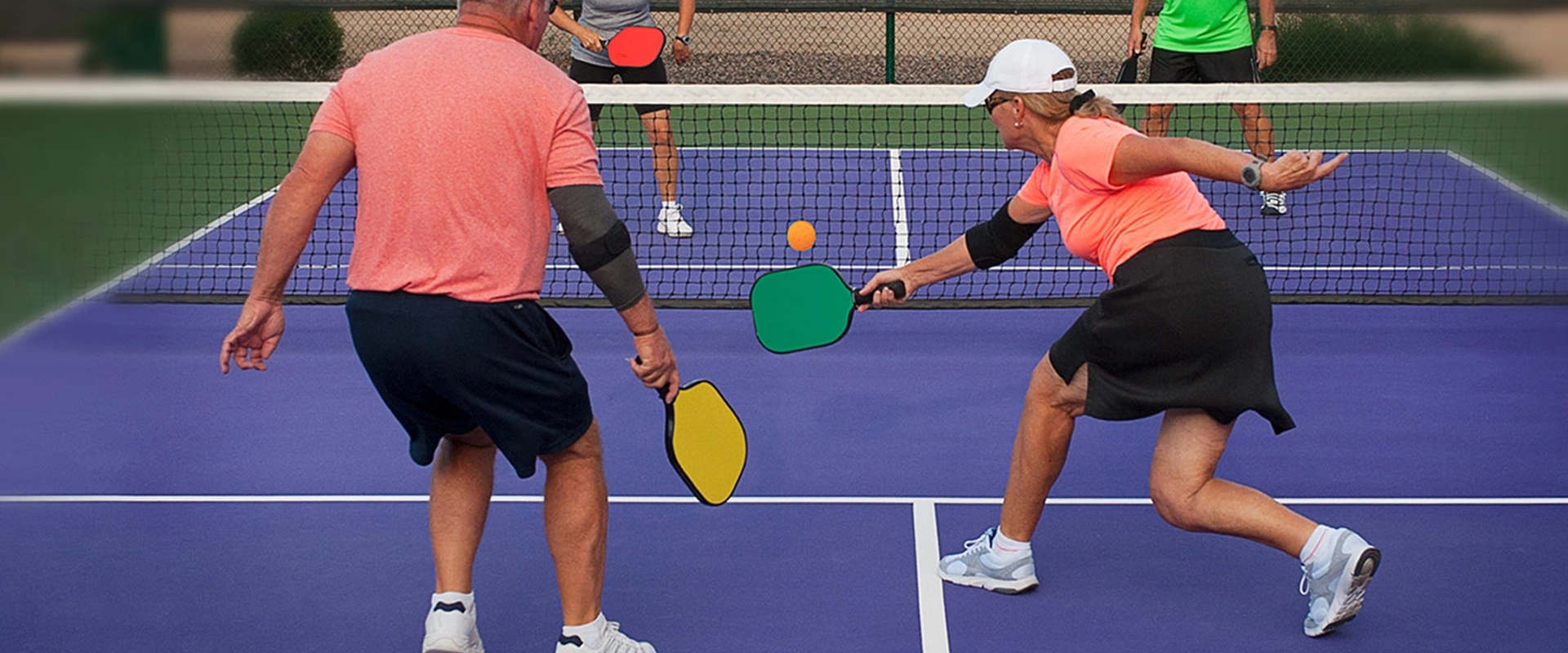
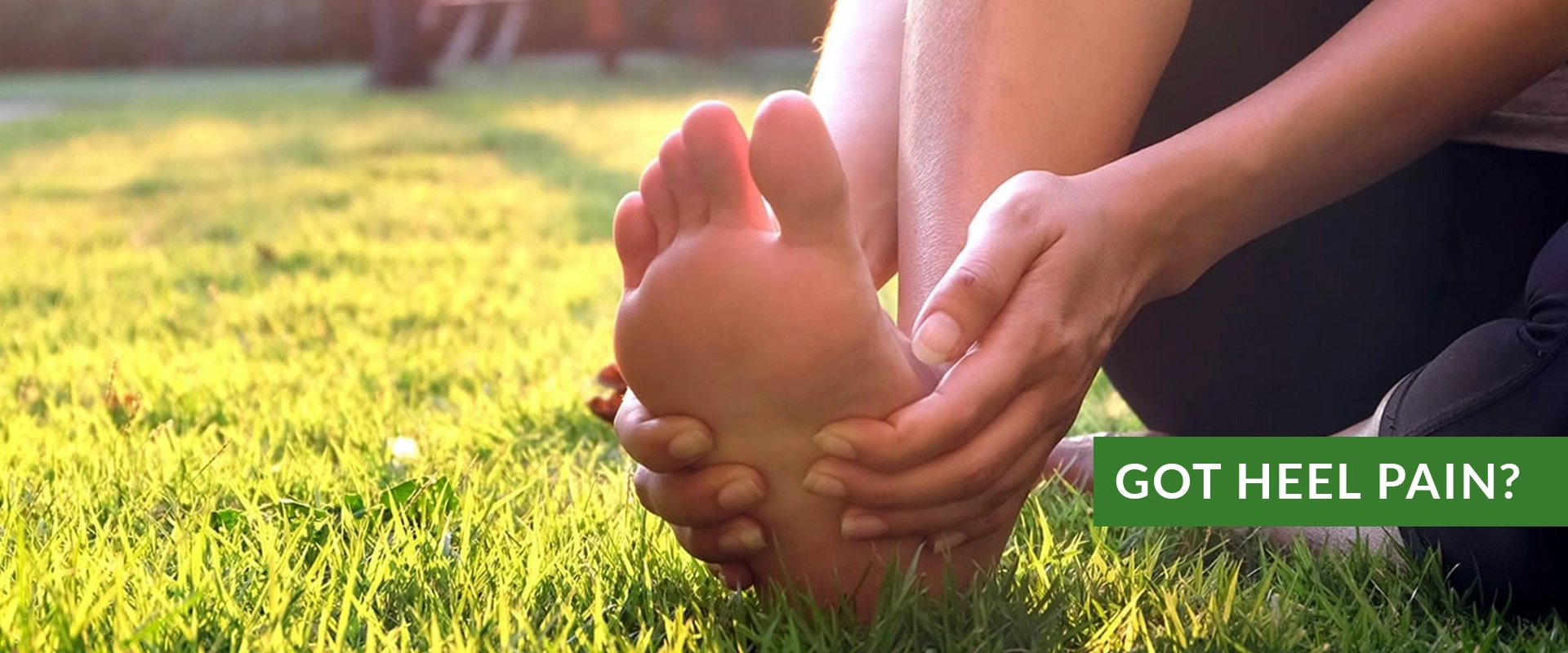
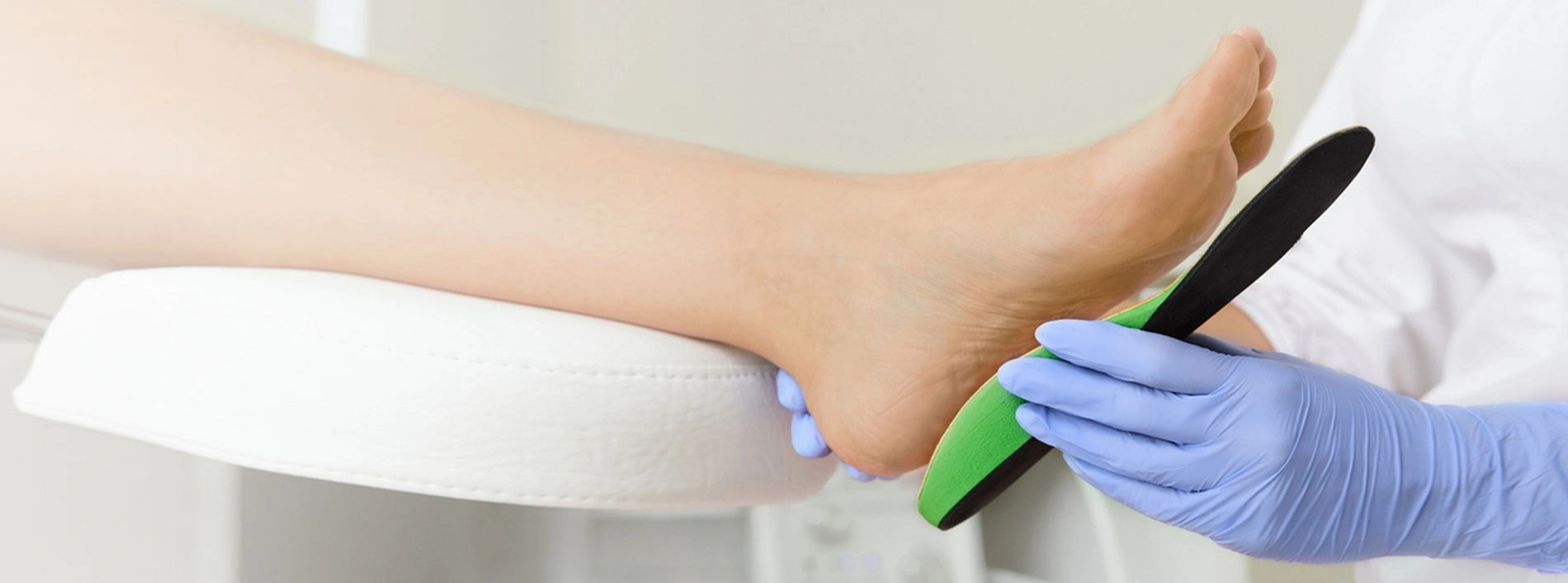

slide-02.jpg
slide-03.jpg
slide-00-custom-orthotics.jpg
slide-01.jpg
WE PROVIDE FOOT CARE FOR THE WHOLE FAMILY
Welcome to Advanced Foot & Ankle, where our team of highly skilled and board-certified podiatrists is dedicated to providing specialized care for your foot and ankle needs. Whether you require conservative treatments or surgical interventions, we go beyond treating symptoms to ensure your complete recovery and a swift return to your regular activities.
During your initial visit, we provide a clinical evaluation of your condition in an effort to make a precise diagnosis, enabling us to devise a tailored treatment plan that addresses your specific needs. With our extensive experience and expertise, we proudly serve the community of Middle Tennessee by offering a range of podiatric services.
At Advanced Foot & Ankle, we specialize in various areas, including skin grafts, diabetic wound care, limb salvage, vascular testing, and surgeries. We understand the unique challenges associated with these conditions, and our team is equipped with the knowledge and skills to provide you with the highest quality care available.
As a patient, your well-being is our top priority. Trust our compassionate team to provide you with the highest standard of podiatric care, helping you regain mobility and enjoy a pain-free life. Schedule your appointment with us today by calling (615) 332-0330 and take the first step towards healthier feet. We proudly serve the communities of Nashville, Midtown, Smyrna, Spring Hill, Columbia, Dickson, Fairview, and Hohenwald.
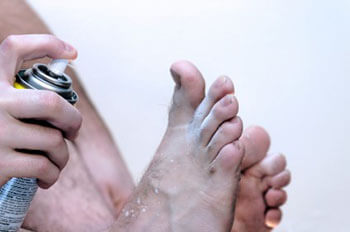
Athlete’s foot is a fungal infection that’s highly contagious and can be spread through direct skin to skin contact as well as indirect contact. Athlete’s foot can be spread directly when an uninfected person touches the infected area of someone who has athlete’s foot. The condition can be spread indirectly through contaminated surfaces, clothing, socks, shoes, bed sheets, and towels.
Areas that are known to be damp, warm, or humid are commonly known to be more susceptible to carrying the fungal infection. With that being said, you should use caution around swimming pools and communal showers to avoid picking up athlete’s foot. If you know you have a weaker immune system, you should also be sure to use caution around these types of environments.
Athlete’s foot is spread by direct contact with an infected body part, contaminated clothing, or by touching other objects and body parts that have been exposed to the fungus. Because the feet are an ideal place for tinea to grow, thrive, and spread, they are the most commonly affected area. The fungus is known, however, to grow in other areas as well.
Aside from the feet, Athlete’s foot has been known to infect the hands, groin, and scalp. Around 70% of the population suffers from tinea infections at some point in their lives; however, not all of these cases are Athlete’s foot. Just like any other ailment, some people are more likely to get it than others. Those with a history of tinea infections or other skin infections, both recurring and non-recurring, are more likely to contract Athlete’s foot. On top of this, the extent to which a person experiences regrowth and recurrent tinea infections varies from person to person.
Those who are affected by athlete’s foot may experience symptoms such as cracking, dryness, flakiness, itchiness, redness, or scaliness of the skin of the foot or in between the toes. Oozing, crusting, swelling, and the formation of blisters are other symptoms that may arise due to athlete’s foot.
Sometimes people will not even know they have Athlete’s foot due to a lack of symptoms.
If athlete’s foot goes untreated, there is a high risk that it may spread from toe to toe. With this in mind, it’s highly recommended that you meet with a podiatrist for a professional diagnosis. Your podiatrist can give you information about treatment options that best suit your case.
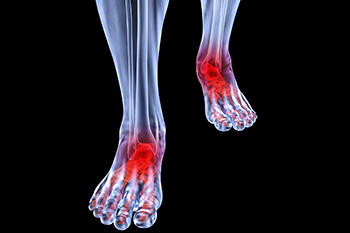
Conditions affecting the feet due to complications with arthritis can take many forms, including osteoarthritis, rheumatoid arthritis, gout, psoriatic arthritis, and ankylosing spondylitis. Osteoarthritis typically affects the joint connecting your big toe to your foot, though it can also be found in the midfoot or ankle region. Unlike osteoarthritis, rheumatoid arthritis typically affects both feet and deals with the same joints on each foot. Gout, which normally affects the big toe, is comprised of needle-like crystals that trigger inflammation in the joints. Psoriatic arthritis causes sausage-like swelling in the toes. Lastly, ankylosing spondylitis can lead to plantar fasciitis and pain at the Achilles tendon.
Many factors play a role in the cause for arthritic feet, including obesity, the aging process, as well as family history or genetic connections to arthritis.To help prevent issues with your feet, examine your feet daily, keep your feet clean, routinely moisturize your feet, keep your toenails trimmed, inspect your shoes for anything that may cause discomfort, and wear socks on a daily basis.
If you’re experiencing any discomfort or pain due to one of the above forms of arthritis, consider over-the-counter pain medication and investing in comfortable footwear. Pain medication coupled with top of the line comfort footwear is a great way to ease the pain that often comes with arthritis. If you’re overweight, it’s also recommended to think about setting a weight loss goal to ease some of the pressure on your feet, as well stay as active as possible. Applying ice or heat to the affected area is another way to calm the discomfort you may experience. It’s important to do research and see whether inserts may be beneficial for you. General foot care, like pampering your feet and keeping them well maintained, is also recommended. Lastly, you should seek professional advice and learn about potential surgery options, if necessary.
For an official diagnosis and information on treatment options, consult with a podiatrist.
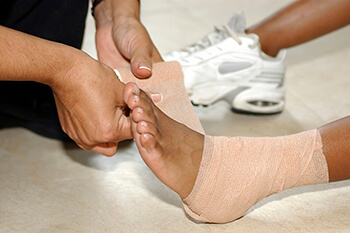
Sprained ankles may occur when a person accidentally rolls, twists, or turns their ankle in an awkward way. When this occurs, ligaments in the ankle are being forced beyond their range of motion, thus causing an injury. Some symptoms that point to having a sprained ankle may include swelling, bruising, tenderness, and pain inflicted on the affected area. Some may also experience restricted range of motion or feel instability in the ankle.
There are many factors that play into the cause of ankle sprains. Simple, everyday activities like walking can lead to an ankle sprain if the activity is being done on an uneven surface. The same goes for running or exercising. Those who partake in sports may be more susceptible to obtaining a sprained ankle because they’re more likely to fall or land uncomfortably after a jump, which can lead to an injury.
It’s important to note that some of the main risk factors that can lead to sprained ankles are improper footwear, a prior ankle complication, weakness or lack of flexibility in the ankle region, and as mentioned above, uneven surfaces and involvement in sporting activities.
To better prevent an ankle sprain, it’s recommended to warm up before partaking in intense physical activities, use caution when walking or running on rough surfaces, consider using tape or wearing a brace on a previously injured ankle, and avoid frequently wearing footwear that puts tension on your ankles, like high heels.
In order to alleviate some discomfort caused by an ankle sprain, it’s recommended to get plenty of rest, try icing the affected area, keep the ankle elevated, and wrap or compress the ankle so it has little to no motion. For a professional diagnosis and information on treatments for a sprained ankle, consult with a podiatrist.

Ankle pain, while initially thought of as an issue for athletes, can affect anyone at anytime. Simple, everyday activities, such as walking or running on an uneven surface, have the possibility of causing serious harm to one’s ankle. That is, however, not to discount athletic injuries; in fact, half of all ankle sprains are inflicted during an athletic activity. The most common causes of ankle injuries include tripping or falling, landing awkwardly after jumping, a sudden impact such as a car crash, or twisting, rolling, and rotating of the ankle.
Some signs that point to the potential of an ankle injury include pain towards the affected area, swelling, bruising, or an inability to walk or bear weight on the affected area. You may also notice an increase in the height of the arch of the inflicted foot. In order to understand why the injury occurred, a podiatrist will often question the patient about the events leading up to their ankle discomfort. An x-ray of the leg or foot may also be performed to discover what’s harming the ankle.
Depending on the condition behind your ankle pain, different treatments may be prescribed by your podiatrist. For ankle sprains, the first step in treatment involves rest, ice, elevation, and compression. Be sure to avoid placing pressure on the ankle, use an ice pack several times a day, and use a compression bandage and elevation to reduce swelling. Other more serious conditions may require the assistance of certain drugs and medications such as nonsteroidal anti-inflammatory drugs (NSAIDs), physical therapy, or even cortisone injections.
If you or someone you know is experiencing pain or discomfort in the ankle region, seek out the help of a podiatrist for a proper diagnosis and treatment regime.
Click below to read what our satisfied patients are saying about our practice.
Read More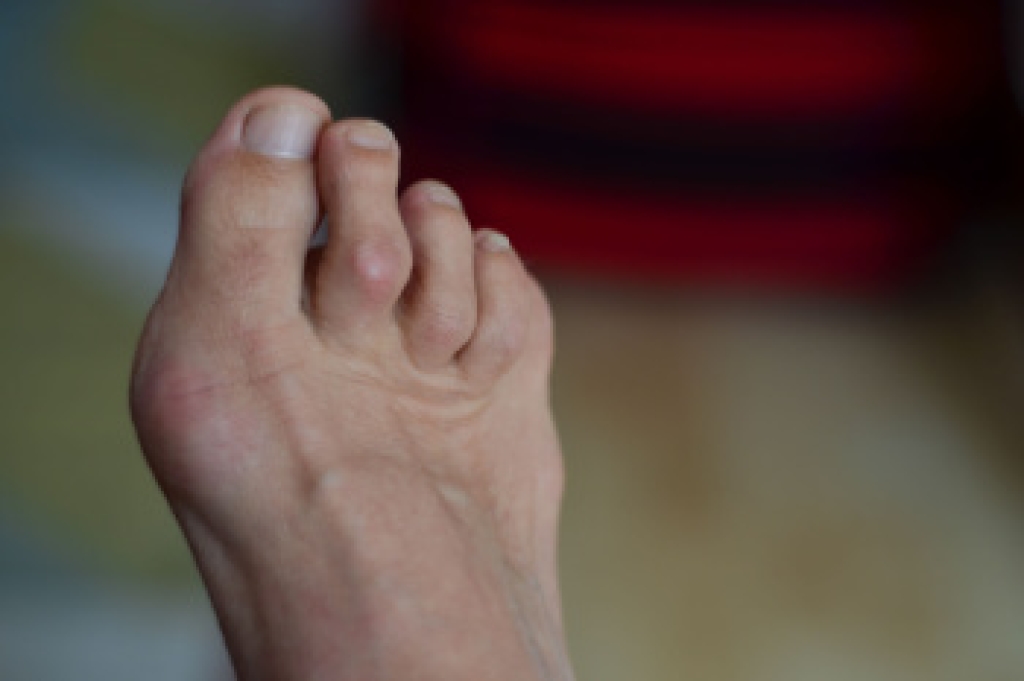 What Causes Hammertoe?
What Causes Hammertoe?  Stretching the Feet to Prevent Arch Pain
Stretching the Feet to Prevent Arch Pain 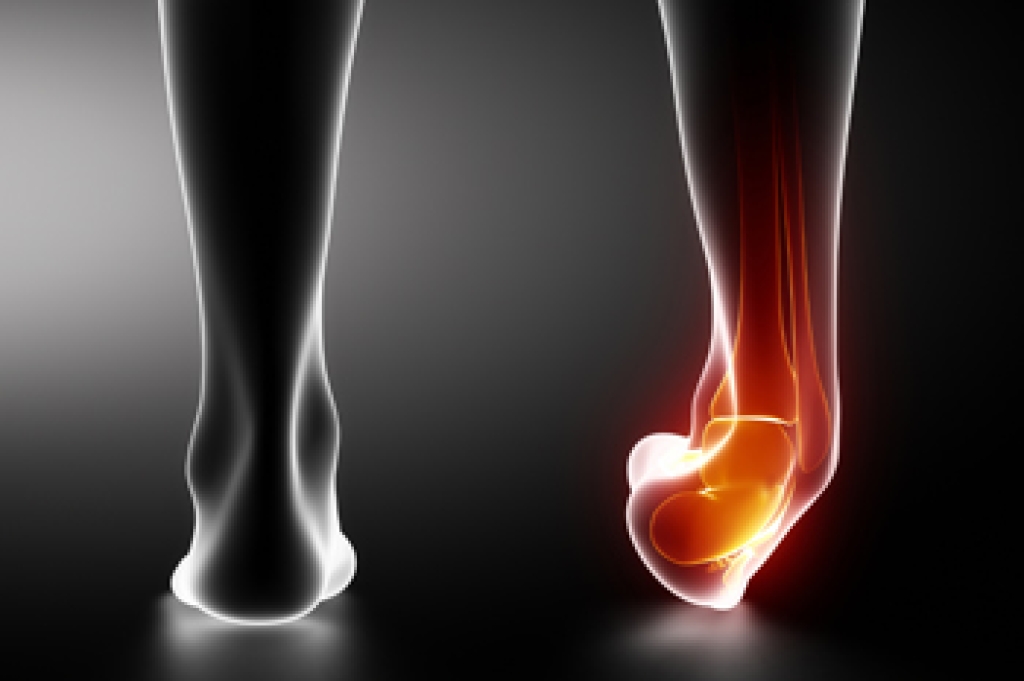 Healing a Broken Ankle Starts With Walking Sooner
Healing a Broken Ankle Starts With Walking Sooner Nashville Foot &
Ankle Center
Smyrna Foot &
Ankle Center
Spring Hill Foot &
Ankle Center
Columbia Foot &
Ankle Center
Dickson Foot &
Ankle Center
Fairview Foot &
Ankle Center
Hohenwald Foot &
Ankle Center
Midtown Foot &
Ankle Center

